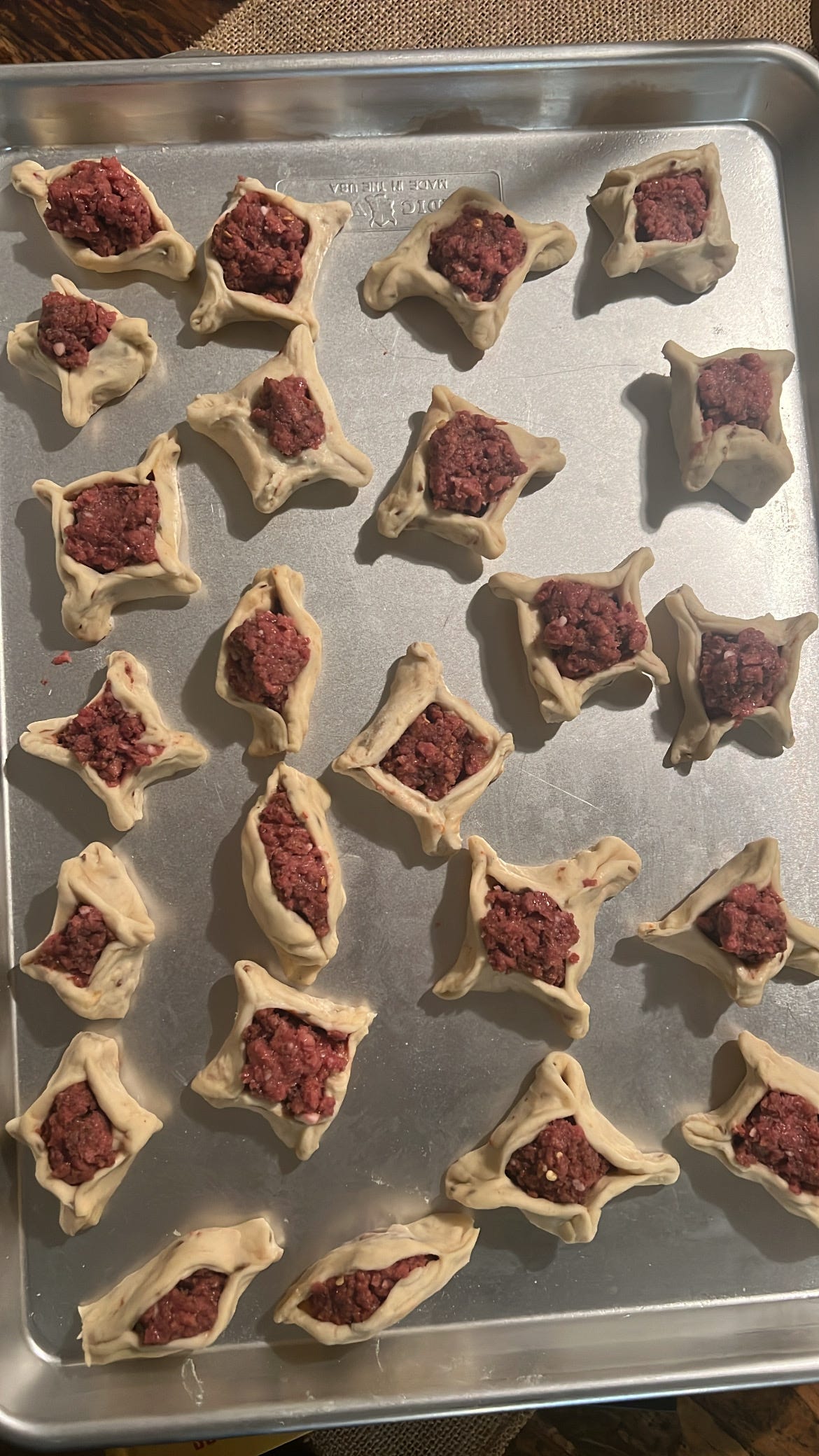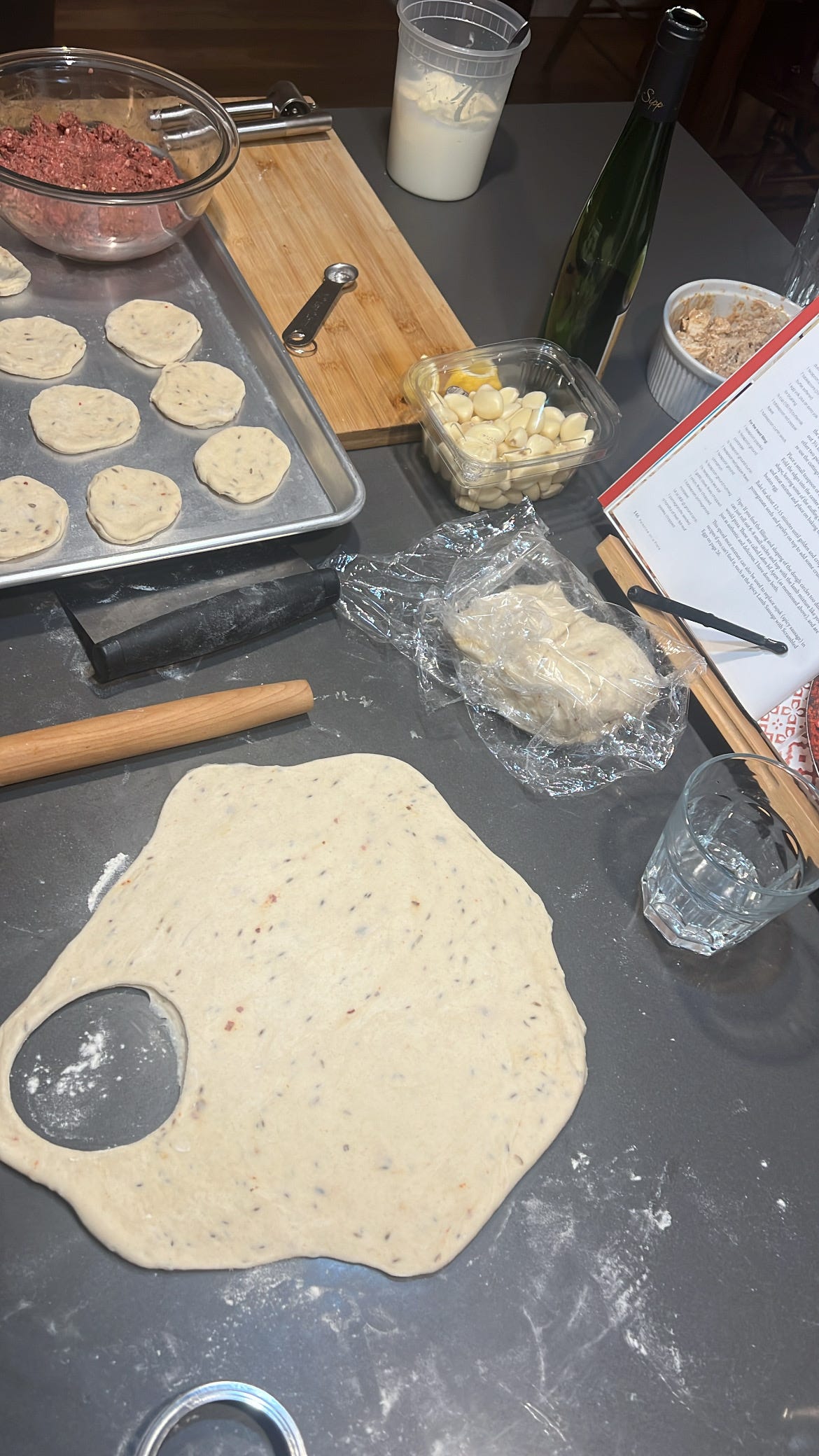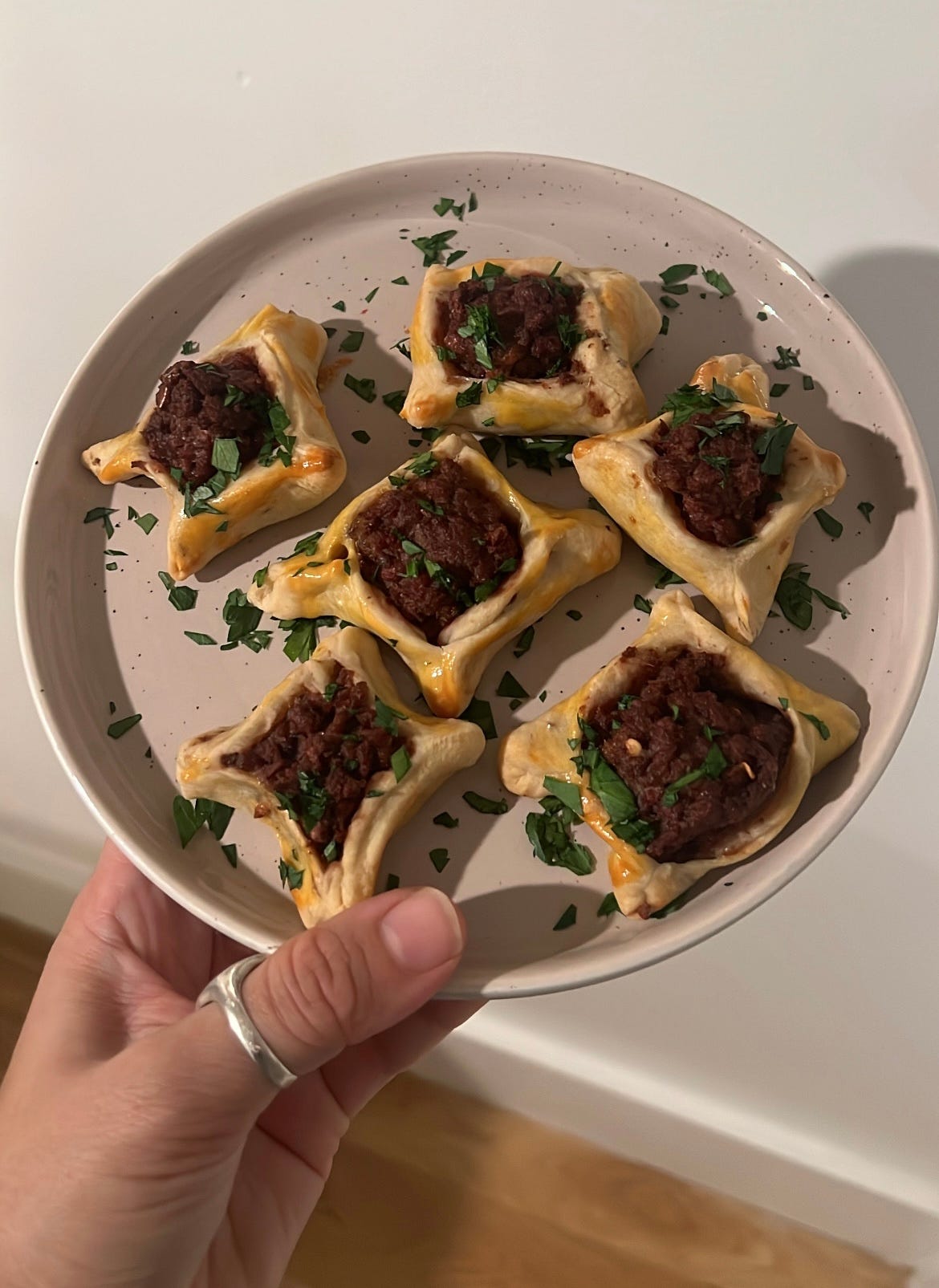The day I unfollowed one of my favorite chefs came after a post she made beginning with the words “food is not political.” Food is a basic necessity, a means of survival that humans have turned into art, hobby, community, and connection. Much like housing, education, and healthcare — all things that we organize around, vote for, and depend on — food, at its core, is something we need to live. In a world where access is power, I can’t imagine anything more political than that.
This continuing newsletter will definitely be filled with arbitrary and fun food-related things like which mustard I use every single day of my life (maille dijon), the absolute worst product in all of Trader Joes (breadless egg breakfast sandwich), and tips on how to cut cinnamon roll dough (use floss) — but I would be remiss not to begin by talking about Palestine, a cause I care for deeply and spend much of my time thinking about. Israel began its siege on Gaza 96 days ago and since then, Gazans have faced the most unimaginable and abhorrent conditions (now including starvation), all while the world watches and the U.S. government funds it. But this didn’t begin on October 7, and Palestinians have been subject to (food) apartheid for over 75 years. One of the best resources I’ve seen that illustrates how Palestinians’ food sovereignty has been consistently under attack comes from Visualizing Palestine:
There will never be enough words to talk about what is happening to Palestinians and the shame/disgust I feel about western complicity. It can feel so isolating and hopeless, but there are things we can do and one of them is to talk about, share, and help preserve the traditions, cuisine, and the history of Palestine. That is something I am committed to doing for as long as I am on my journey through food scholarship, and something you can expect to hear much of right here.
Some excellent Palestinian food bloggers to follow:
Palestine on a Plate
Palestine in a Dish
The Golden Balance
fufuinthekitchen
Chef Yaso (a 13 year old rippin it from his kitchen in Louisiana!)
My friend, Fadi Odeh (buy his products!)
This week I decided to spend an afternoon with some of these chefs and in my cookbook/recipe archive, particularly with Palestine on a Plate. I had some time, so the first recipe I tried to tackle was Fatayer. If you know me, you know two things are true:
1. I hate working with dough. Dough is my weakness, my kryptonite. It makes me mean and despite many years of serious home cooking, I am still terrible.
2. I am a lesbian and therefore everyone I have dated and most of the people I spend my time with do not eat meat. I do eat meat. Enthusiastically and as ethically as possible (I will save that debate for another post). Impossible ground meat changed my life.
While it isn’t clear who exactly invented Fatayer فطاير (as is the case with many dishes from the Levant…humanity is old), Lebanese, Syrian, Palestinian, and Egyptian people all claim this dish as a part of their cuisine. Fatayer and its fillings, like many other dishes, varies by region and in Palestine it is usually filled with meat or akawai cheese. For this recipe, I used impossible ground beef because it makes 24 pies and I cannot in good faith eat that much lamb.

In the end, it took about 3 hours and they were incredibly delicious. I ate about 6 but that’s not for you to judge and they heat up days later in the microwave quite well.
If you just looked at that recipe and thought to yourself “hell no,” I do not blame you. I want to give you guys things you will actually cook as well and at the risk of this post turning into a novel, if you make nothing else this week, make your own hummus. It’s easy, it’s healthy, and it removes the temptation of buying Sabra. Hummus is one of the oldest foods in the Arab world and should be credited to its original people, but I digress - here is a recipe derived from a phone call with my friend’s Palestinian mother.
Ingredients:
2 cups dried chickpeas* OR 1 can of chickpeas
1/4 cup tahini (shake jar before use)
Juice of 1/2 a lemon
1 clove garlic
1.5 teaspoon salt
3-4 ice cubes
EVOO (optional)
*if using dried chickpeas (recommended), soak overnight or 8 hours and cook for 45 minutes in a pot filled with fresh water and 2 tsp baking soda. Lay out to dry on a dishcloth and remove skins.
Instructions:
Add chickpeas to a food processor or blender and pulse a few times until chickpeas are a bit grainy.
Add tahini, salt, lemon, garlic, and blend for about 20 seconds. With the motor running, add in ice cubes one at a time.
Taste, adjust for salt, and with motor running, add 1/8 cup olive oil
Scoop into a bowl, make a well in the center, and serve with za’atar and more EVOO
Alright, that’s all I’ve got for you. I’ll be back with more Palestinian/Levantine recipes another week, but for now, I hope you do some reading, take action, and listen to some habibi funk in your kitchen.
xoxo
Rebecca










You frame the issue as if Israel wanted a war in Gaza and make no mention of the Oct 7 genocide, which is holocaust denial, nor any mention let alone criticism of Hamas. You could’ve made this post without discussing the politics and that would’ve been fine, but peppering it with the secret ingredient of antisemitism ruins this dish. Good food blogging, terrible politics.